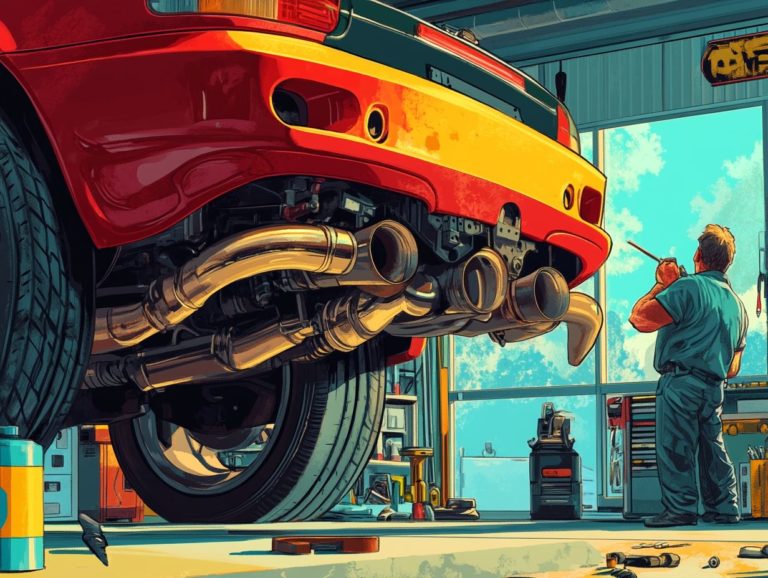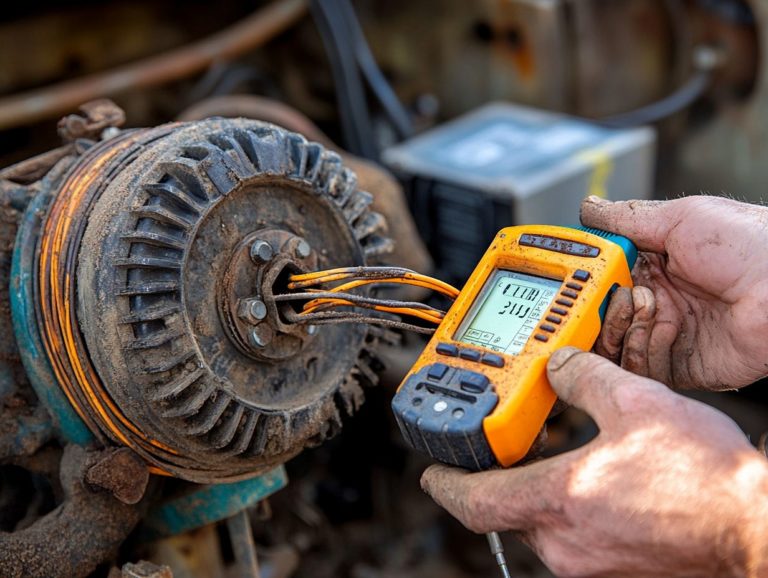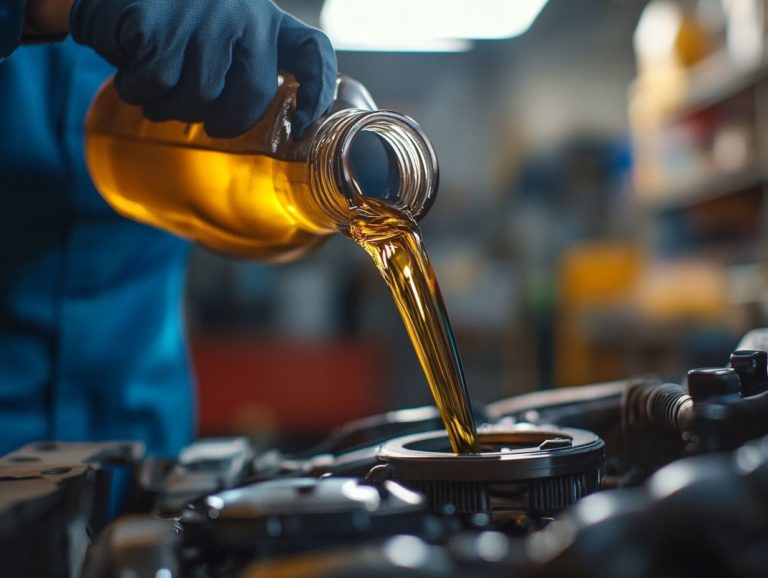How to Check Your Tire Pressure Properly?
Maintaining proper tire pressure is essential for your vehicle’s safety and efficiency. When your tires are under-inflated or over-inflated, you’re inviting issues like poor handling, increased fuel consumption, and the risk of tire blowouts.
Regular checks on your tire pressure should become a routine part of your vehicle care. Armed with the right tools and a straightforward step-by-step guide, you can ensure you’re getting accurate readings every time.
Familiarizing yourself with best practices for tire care, learning about common pitfalls to avoid, and understanding how often you should inspect your tires is crucial.
By following these practical tips, you can enhance your safety and maximize your vehicle’s performance.
Contents
- Key Takeaways:
- The Importance of Checking Tire Pressure
- Tools Needed for Checking Tire Pressure
- Step-by-Step Guide for Checking Tire Pressure
- When and How Often to Check Tire Pressure
- Common Mistakes to Avoid
- Additional Tips for Maintaining Proper Tire Pressure
- Frequently Asked Questions
- How to Check Your Tire Pressure Properly?
- Why is it important to check your tire pressure?
- When is the best time to check your tire pressure?
- Can I rely on the tire pressure monitoring system (TPMS) in my car?
- How do I know what the recommended tire pressure is for my car?
- What should I do if my tire pressure is too low or too high?
Key Takeaways:
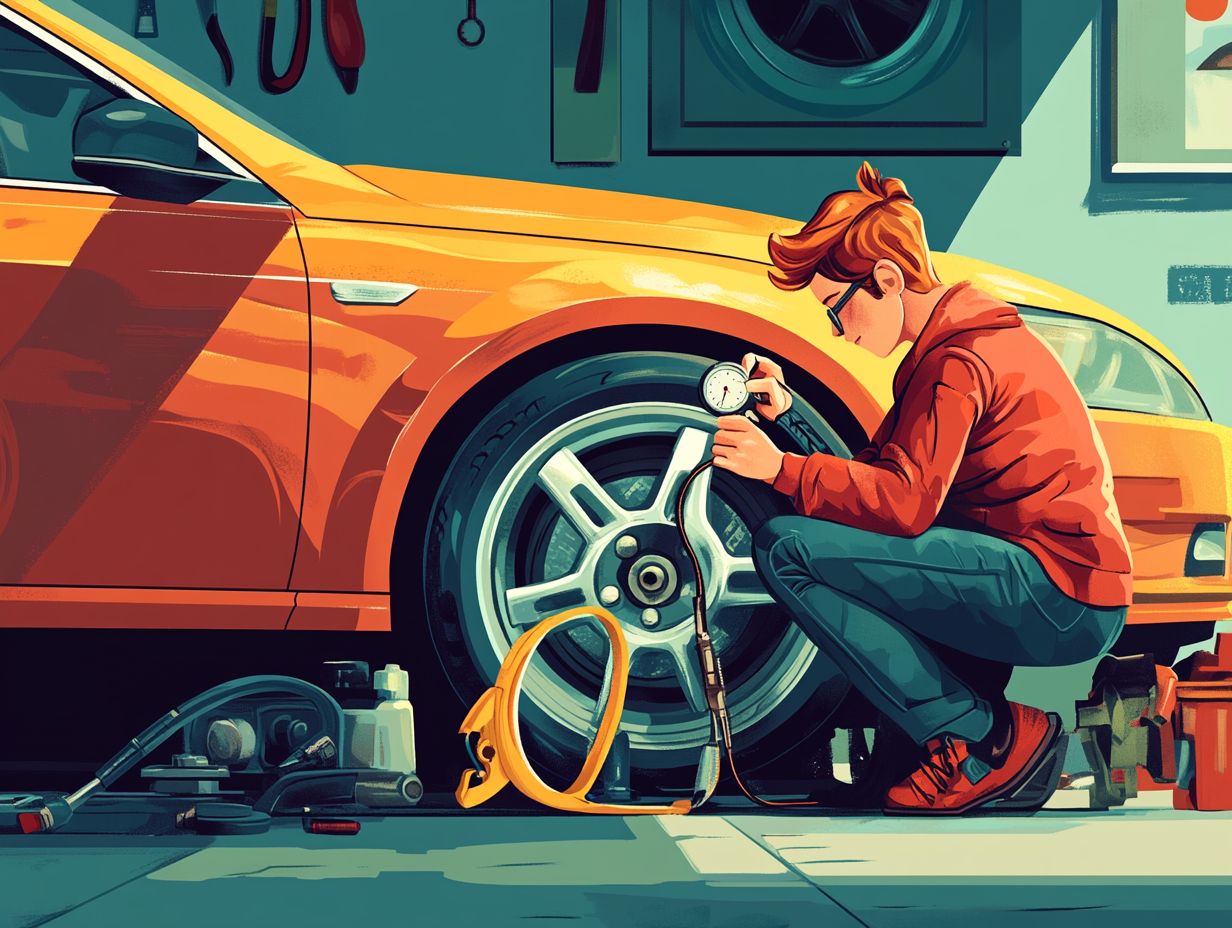
- Proper tire pressure is crucial for safety, fuel efficiency, and prolonging the life of your tires.
- Essential tools for checking tire pressure include a tire pressure gauge and an air compressor.
- Follow a step-by-step guide and check your tire pressure at least once a month or before long drives.
The Importance of Checking Tire Pressure
Checking your tire pressure is essential for ensuring both your safety and your vehicle s performance. It has a direct impact on driving stability and the longevity of your tires.
Maintaining proper tire pressure prevents underinflated tires from compromising your fuel economy. It also reduces the risk of blowouts, which can lead to serious accidents. Regular checks allow you to spot any tire wear patterns and keep the pressure within the recommended pounds per square inch (PSI) outlined in your owner s manual.
Well-maintained tire pressure enhances vehicle performance, benefiting the safety of you and your passengers.
Why Proper Tire Pressure Matters
Proper tire pressure is crucial for achieving optimal vehicle handling, traction, and safety on the road. Underinflated tires can lead to increased wear and reduced fuel economy.
By maintaining the recommended PSI based on your vehicle’s weight and load, you extend tire life and enhance your driving performance and stability key elements for safe navigation.
The condition of your tires significantly impacts overall driving safety. Worn or damaged tires can severely compromise traction, especially in adverse weather conditions.
Keeping a vigilant eye on tread depth and promptly addressing any irregularities like bulges or cracks can help prevent potentially hazardous situations.
Regularly checking your tire pressure and ensuring it stays within the correct PSI not only boosts fuel efficiency but also promotes better alignment. This dramatically reduces wear on suspension components and leads to a smoother, more controlled ride.
Therefore, proactive tire care is critical for anyone who values longevity and safety on the road.
Tools Needed for Checking Tire Pressure
To ensure an accurate check of tire pressure, you ll need specific tools that guarantee both precision and efficiency in your tire maintenance routine.
A dependable tire pressure gauge is essential for obtaining precise PSI measurements, while an air compressor is vital for inflating tires to their recommended levels.
Understanding how to address the tire pressure light can greatly improve your vehicle’s overall performance and safety.
Essential Tools and Equipment
The essential tools for checking tire pressure in your vehicle are a tire pressure gauge and an air compressor both crucial for maintaining optimal tire health and performance.
A reliable tire pressure gauge gives you an accurate reading of your tire’s inflation level, allowing you to spot any discrepancies from the manufacturer s recommended PSI.
An air compressor, on the other hand, enables you to inflate under-inflated tires quickly and efficiently. These tools aren’t just for the everyday driver; they re critical for auto mechanics who rely on them during routine checks and repairs.
By integrating these instruments into your maintenance routine, you can significantly enhance vehicle safety, optimize fuel efficiency, and prolong tire life. The added convenience of digital gauges and compact air compressors empowers mechanics to deliver consistent performance and reliability in their services.
Step-by-Step Guide for Checking Tire Pressure
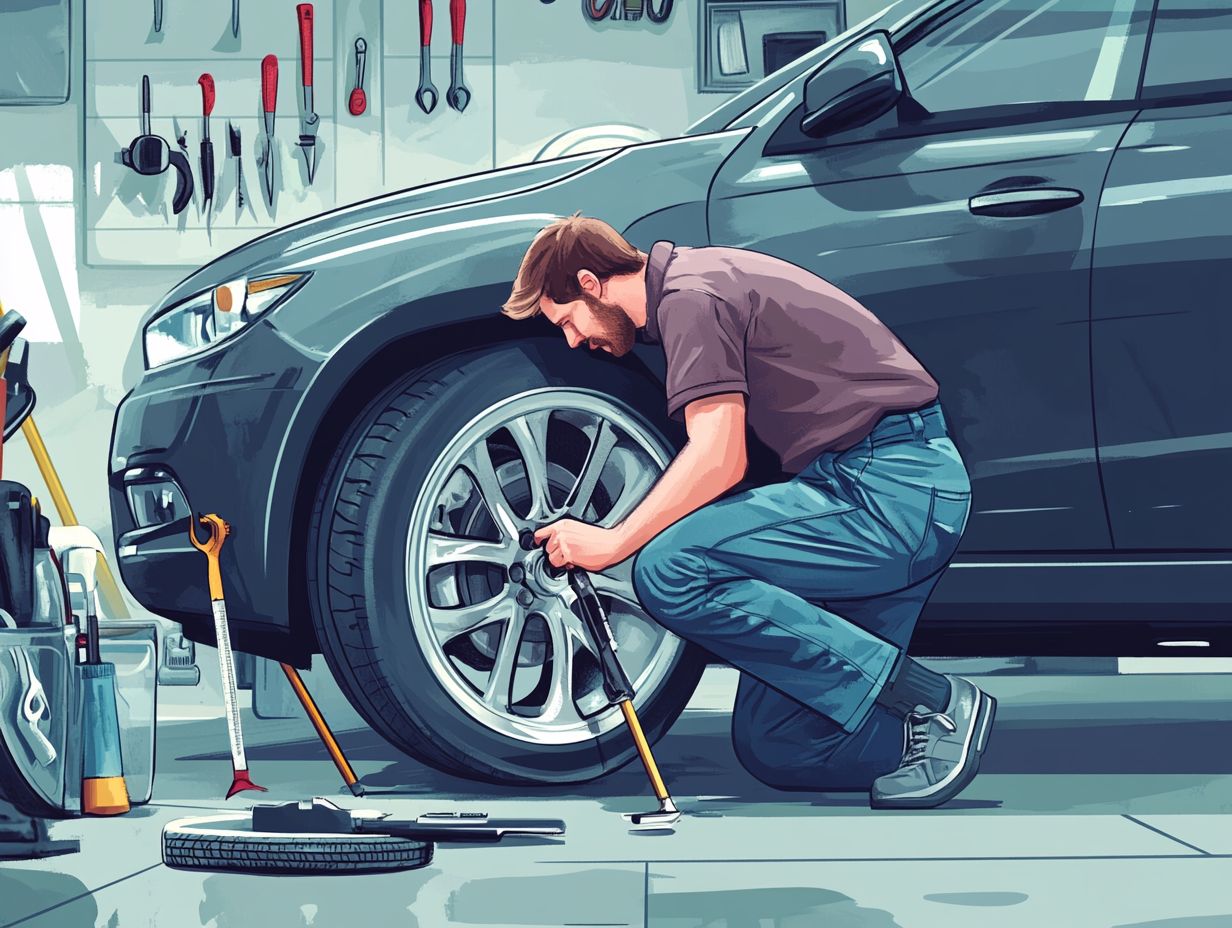
Checking your tire pressure requires a step-by-step method that guarantees accuracy and fosters proper tire maintenance. For more detailed instructions, refer to this guide on how to properly inflate your tires, as this ultimately enhances your vehicle’s safety and performance.
Start by using a tire pressure gauge to measure the current PSI. Then, compare this reading with the recommended levels outlined in your owner’s manual or provided by the tire manufacturer.
It’s also important to consider how temperature variations can impact air pressure, as these fluctuations can influence your readings.
Instructions for Accurate Pressure Reading
For an accurate pressure reading, ensure your tire is cold. Tire pressure can rise with temperature, so a proper check is essential. Use a tire pressure gauge to manually measure and record the PSI.
This step is crucial because even a short drive can heat up your tires. This can result in inflated readings, suggesting a higher PSI than what is optimal for your vehicle s performance. Start by parking your vehicle in a shaded area to prevent external heat from skewing your readings.
Next, remove the valve cap from each tire and swiftly insert the gauge to check the pressure. It s wise to compare your readings against the manufacturer s recommended PSI, typically found on a sticker inside the driver s side door or in the vehicle’s manual.
Maintaining the correct tire pressure enhances fuel efficiency, improves handling, and ensures safety on the road. Incorporating this check as a regular part of your vehicle maintenance routine is a smart move.
When and How Often to Check Tire Pressure
Regularly checking your tire pressure is essential for ensuring your vehicle’s safety and optimal performance. Fluctuating air pressure can lead to safety concerns, such as blowouts and decreased fuel efficiency.
Experts suggest examining your tire pressure at least once a month and before embarking on long trips. This helps you maintain a routine and respond quickly to any tire pressure warning lights that may arise.
How Often Should You Check Your Tires?
Make it a habit to check your tire pressure regularly at least once a month and before any long journey to ensure your vehicle s safety and effective tire maintenance.
Regular tire pressure checks are crucial as they have a direct impact on fuel efficiency, handling, and overall tire longevity. When your tire pressure is too low, you risk uneven tire wear and higher fuel consumption, which can add up to significant costs over time.
Many modern vehicles have tire monitoring systems that automatically track tire pressure and alert you to any irregularities. These systems provide real-time data, allowing you to manage tire conditions proactively and underscoring the importance of maintaining optimal pressure for safer driving experiences.
By combining routine checks with advanced technology, you can ensure your vehicle performs at its best.
Common Mistakes to Avoid
In your pursuit of tire safety, avoiding common mistakes when checking tire pressure is absolutely essential. This diligence ensures proper inflation and optimal vehicle performance.
- If you forget to check the tires when they’re cold, you risk obtaining inflated readings that can lead to serious hazards.
- If you neglect to reset your tire pressure gauge, your readings may not be accurate.
- Prioritizing these details enhances your driving experience and safeguards your journey.
Errors that can Affect Tire Pressure
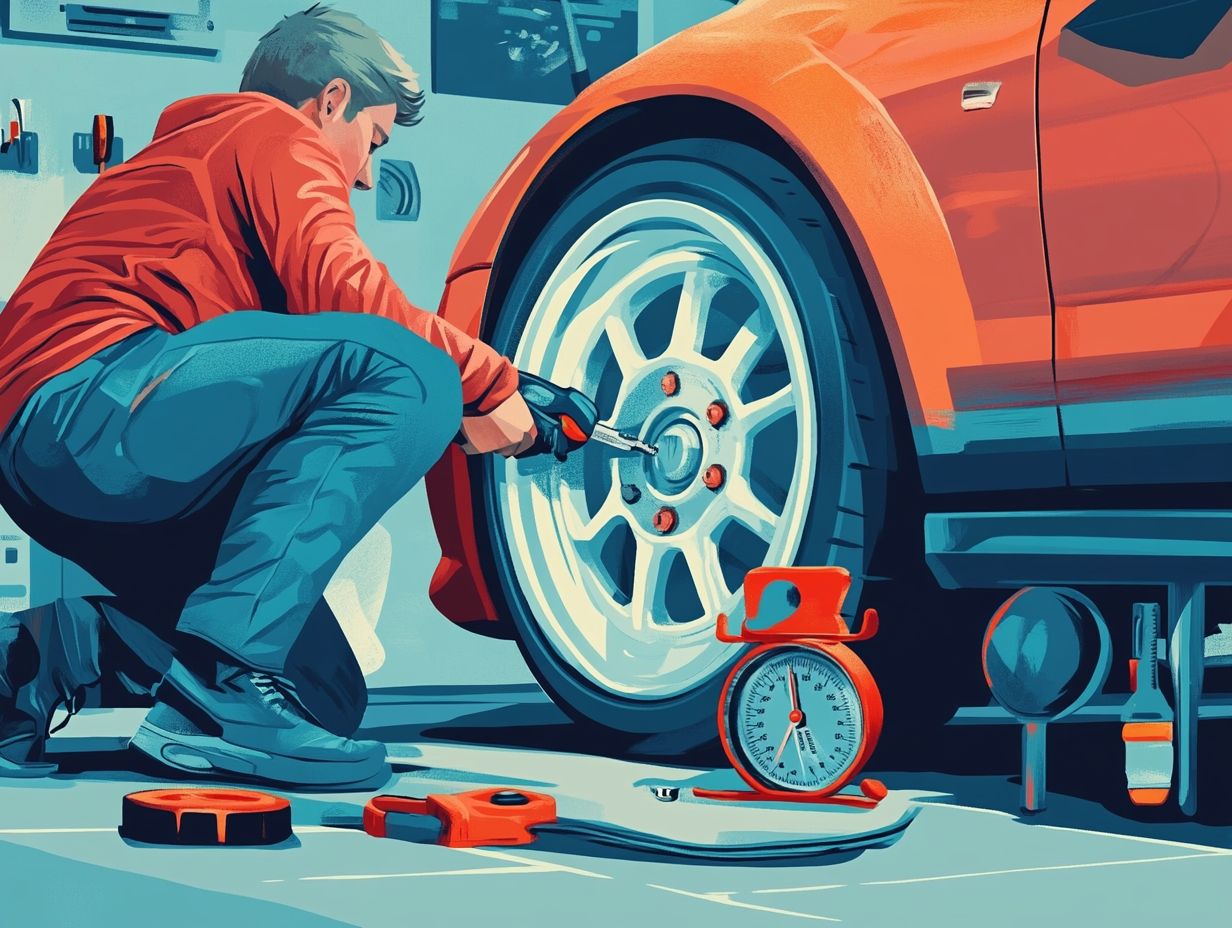
Errors in checking air pressure can significantly impact your tire maintenance routines. They may lead to inaccurate readings and potential safety hazards.
For example, if you neglect to check the pressure when the tires are cold, you might end up with misleading measurements because heat causes air to expand. Relying on a malfunctioning gauge can also lead to results that misinform your maintenance efforts, ultimately compromising your vehicle’s performance.
When you overlook these common pitfalls, you not only jeopardize the longevity of your tires but also raise the chances of blowouts or reduced fuel efficiency. This is precisely why establishing a regular routine for tire pressure checks is essential for ensuring your safety and achieving optimal performance on the road.
Additional Tips for Maintaining Proper Tire Pressure
Maintaining the right tire pressure is essential for your vehicle’s safety. Adopting best practices for tire care can greatly extend their lifespan while improving overall performance.
It’s important to consider factors like cargo load. Heavier loads may necessitate adjustments in tire pressure to meet the added demands.
Best Practices for Tire Care
Best practices for tire care involve regularly checking air pressure, ensuring proper inflation levels, and monitoring tire wear patterns to enhance both safety and longevity.
Make checking your air pressure a monthly habit to avoid blowouts and improve fuel efficiency. Proper inflation boosts handling and traction while minimizing the risk of uneven wear, which could jeopardize the structural integrity of your tires.
Keeping an eye on tire wear patterns can help you spot alignment or suspension issues early on, preventing additional damage down the line. Incorporating regular rotations and balancing into your routine helps promote even wear, extending the lifespan of your tires and elevating your overall driving experience.
Frequently Asked Questions
How to Check Your Tire Pressure Properly?
To check your tire pressure, use a tire pressure gauge and find an air pump at a gas station.
Why is it important to check your tire pressure?
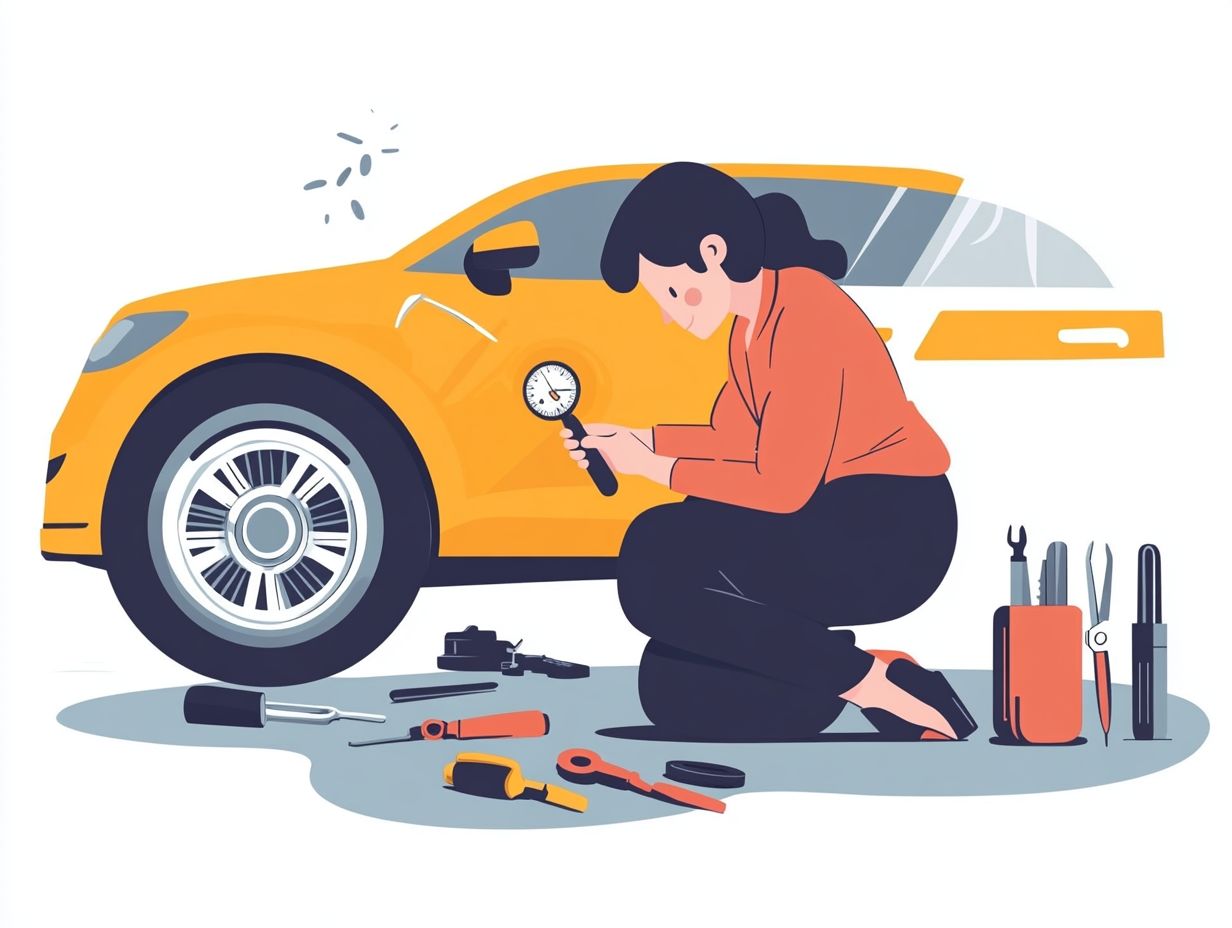
Maintaining proper tire pressure is crucial for your safety and the longevity of your tires. Improper tire pressure can lead to decreased fuel efficiency, uneven tire wear, and even tire blowouts.
When is the best time to check your tire pressure?
Check your tire pressure at least once a month, or before any long trips. It’s also a good idea to check when the tires are cold, as the pressure will increase once the tires have been driven on.
Can I rely on the tire pressure monitoring system (TPMS) in my car?
While the TPMS can provide a general indication of low tire pressure, it is not always accurate. Physically check your tire pressure with a gauge to ensure it is at the recommended level.
How do I know what the recommended tire pressure is for my car?
You can find the recommended tire pressure in the owner’s manual or on a sticker located on the driver’s side door jamb. You can also check the manufacturer’s website for this information.
What should I do if my tire pressure is too low or too high?
If your tire pressure is too low, use an air pump at a gas station to inflate the tires to the recommended level. If it’s too high, use the gauge to release air until it reaches the recommended level. Avoid over-inflating or under-inflating your tires.


